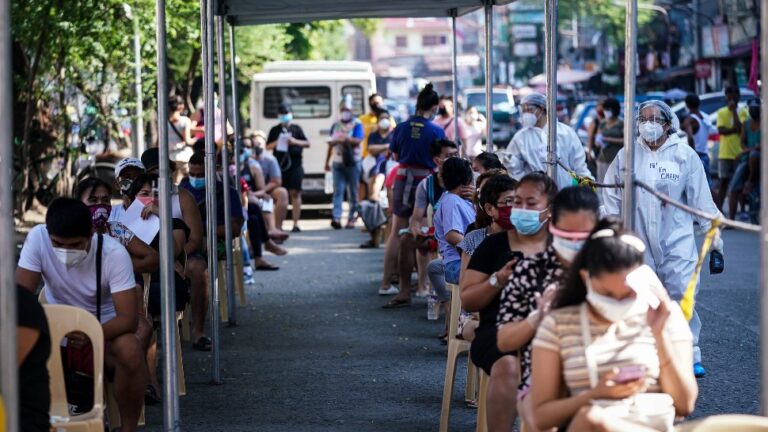
New jargon for your COVID dictionary.
By Arianne Merez For Reportr, Esquire Philippines, May 28, 2021
In the continuously evolving COVID-19 pandemic fight (and dictionary), authorities have introduced a new term to Filipinos: population protection.
Forget herd immunity as the yearend goal. The government is now eyeing population protection against COVID-19 before the end of the year as more vaccines are expected to become available to Filipinos.
The shift in terminologies is due to the changing criteria that come with “herd immunity,” said COVID-19 vaccine operations center chair Health Usec. Myrna Cabotaje, and Dr. Ted Herbosa, who advises the country’s pandemic task force.
“Very important na yung goal natin maintindihan talaga kasi bagong sakit itong COVID-19. Hindi pa natin alam how it will behave,” Herbosa said in a Palace press briefing Thursday.
What is population protection?
Population protection means preventing and minimizing deaths by vaccinating the most vulnerable to COVID-19 first.
“Ang ating term ngayon ay really ‘population protection’ We prevent hospitalization. We prevent and minimize deaths by prioritizing,” Cabotaje said.
“The bigger the population that is vaccinated, we have population protection so hindi magkakahawaan. Kung may magkahawaan man, this will be very mild. And hindi naman transmissible usually kapag nabakunahan ka na, hindi ka na makaka-transmit o kung maka-transmit ka man ng infection ay very mild ang symptoms,” she said.
To achieve this, Dr. Herbosa explained that the following priority groups should receive COVID-19 vaccines by the target November 2021:
- A1 Priority: Health Workers
- A2 Priority: Senior Citizens
- A3 Priority: Persons with Comorbidities
- A4 Priority: Economic Frontliners
- A5 Priority: Poor and Marginalized
“Ang population protection, ibig sabihin nun ‘yung high risk groups napigilan natin mamatay o magkaroon ng severe illness na napakamahal ang ginastos sa ospital,” Herbosa said.
How is population protection different from herd immunity?
Population protection is an initial target on the way towards herd immunity.
As explained by Usec. Cabotaje, population protection is concentrating mass vaccination efforts in limited geographic areas.
In the case of the Philippines, these are urban hubs reporting high COVID-19 cases or the so-called NCR Plus 8—Metro Manila, Bulacan, Pampanga, Laguna, Batangas, Cavite, Rizal, Cebu, and Davao.
But for herd immunity, Cabotaje said there needs to be continuous “full protection.” This means taking into consideration variants of the virus, the need for booster shots after the vaccine and the population needed to be vaccinated to achieve it.
“We are shifting to the term ‘population protection’ through mass immunization kasi po iyong ating herd immunity, marami pong mga kaakibat na mga criteria,” she said.
“We are considering the variant. We are considering the regular definition of the herd immunity na magkakaroon ka ng protection, ng full protection na tuluy-tuloy. Kasi ngayon, hindi pa natin alam kung kailangan ng mga booster shots at tsaka iyong mga ibang bakuna ay naa-address pa iyong ating mga variants,” she said.
Herd immunity is defined by the World Health Organization as “the indirect protection from an infectious disease that happens when a population is immune either through vaccination or immunity developed through previous infection.”
Government Target
Initially, the government eyed vaccinating at least 70 million Filipinos by the end of the year to achieve herd immunity. It later however lowered its target to around 50 million people across the country, citing the limited global supply of vaccines.
Most recently, authorities are now eyeing “population protection” with a focus on the so-called NCR Plus 8 by the end of the year.
The Philippines, as of May 25, has fully inoculated 1,029,061 Filipinos against COVID-19. This means they have received two doses of the vaccine.
At present, the country’s COVID-19 vaccination program covers health workers, senior citizens, and persons with comorbidities. Economic frontliners are eyed to be included by June.
This story originally appeared on Reportr.world.